A South African Sojourn
The thrill of safari? Check. Big city culture? Check that box, too. Dramatic scenery and a renowned wine region? Check and check. South Africa delivers on all counts
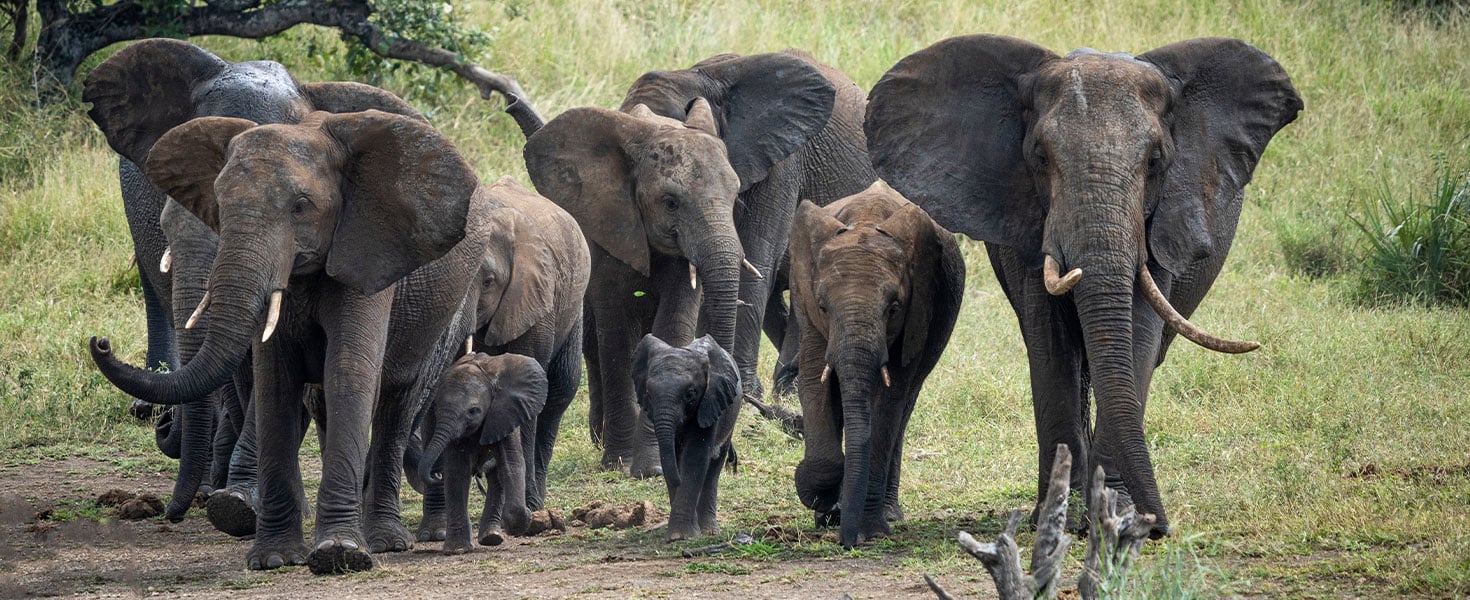

Just before sunrise on a pleasant South African fall day, we set out in our open-air Land Rover in search of wildlife in one of the country’s numerous national parks and reserves. The previous day, my safari group—five travel agents, two guides and me—had seen zebras, giraffes, wildebeests and various types of birds, but now a message had been transmitted by radio to our driver: A herd of elephants was nearby. We zipped over bumpy dirt roads toward a stand of trees where a dozen elephants had congregated, including a calf clinging closely to its mother.
African bush elephants are the world’s largest terrestrial animals, with males standing up to 13 feet tall and weighing more than 10,000 pounds. Females may be smaller, but they still average 5,000 to 7,000 pounds. We watched in excited silence as the behemoths nonchalantly munched on grasses and pulled up plants by their roots.
After a while, a radio call came about a sighting of lions, and off we went. Big cats aren’t seen as often as animals like zebras and antelope, and we didn’t want to miss them.
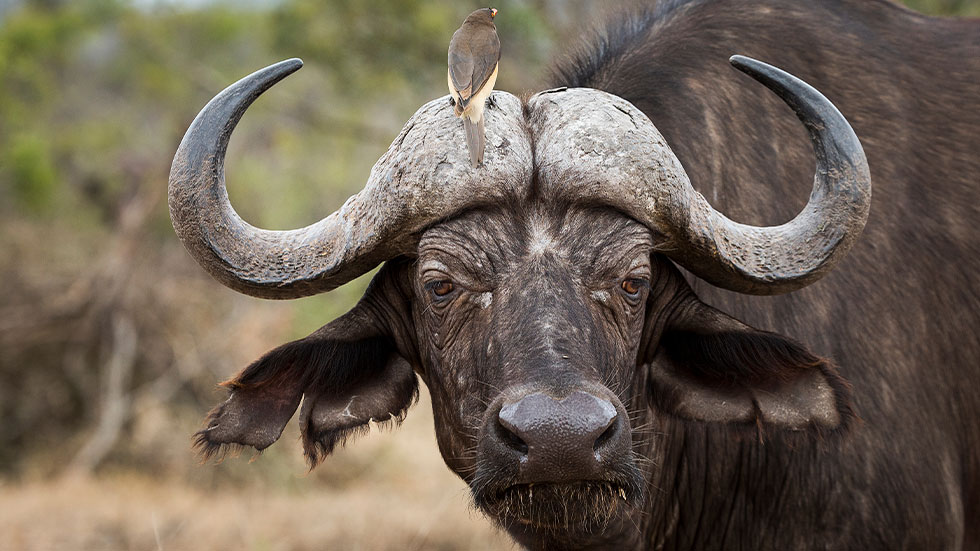 African buffalo; Photo by sheldrickfalls/stock.adobe.com
African buffalo; Photo by sheldrickfalls/stock.adobe.com
SAFARI IN THE SAVANNA
I’d grown up watching nature shows on television, and the African savanna had always seemed as far away to me as Mars. Yet, here I was, in the midst of my childhood fantasy, embarking on twice-daily game drives, hearing the roar of lions and the howls of hyenas, watching hippos emerge from a lake and spying birds perched serenely atop massive African buffalos. Back at the lodge, which was just outside the national park, monkeys screeched and swung from branch to branch as they feasted on the trees’ fruit.
One evening, our entire tour group of 40 or so people returned to the bush for dinner by the glow of firelight as our gun-toting guides stood watch around us. The animals didn’t even venture close, though, and we feasted on antelope and fresh produce, clinking wine glasses and chatting with our fellow travelers. On the way back to the lodge, our guides kept a lookout for ever-elusive leopards—and we were lucky enough to spot one hidden in the distant brush.
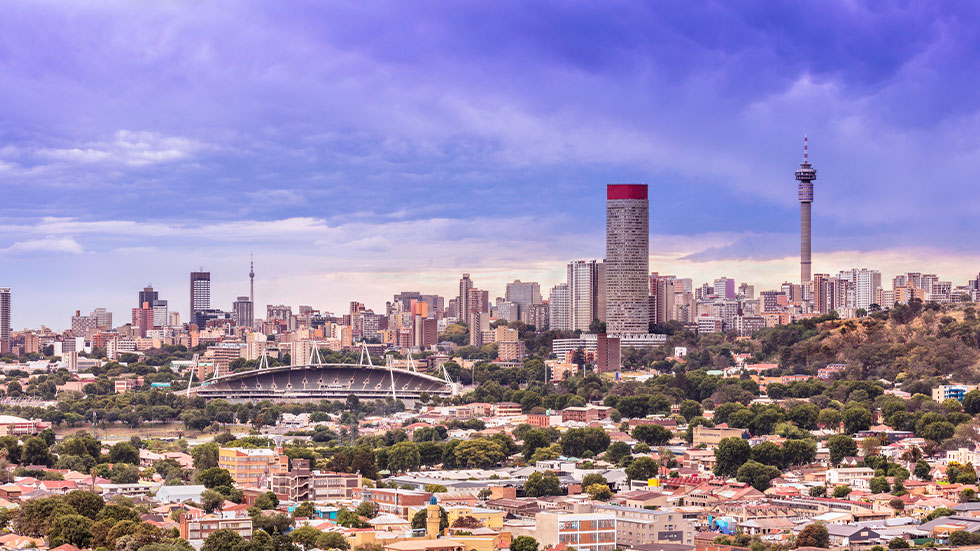 Johannesburg; Photo by istock.com/thegift777
Johannesburg; Photo by istock.com/thegift777
JOURNEY TO JOHANNESBURG
As thrilling as these few days on safari were, they composed but a portion of my nine-day visit to South Africa, a country where you can easily combine wilderness adventure with city sights, dramatic coastal scenery and wine-country tastings.
Our trip had begun in Johannesburg. With all the sophistication you’d expect of a city of nearly five million, Joburg, as it’s known, has restaurants and shopping aplenty. I bypassed the luxury boutiques and headed instead to an indoor artisan bazaar, where I picked up beaded wire sculptures of giraffes and penguins (more on those later), carved wooden salad-serving utensils, and a colorful hand-painted wall hanging of giraffes and zebras that now adorns my home office, never failing to take me back to those days on safari.
 Apartheid Museum entrance; Photo by Theresa Medoff
Apartheid Museum entrance; Photo by Theresa Medoff
Souvenir shopping aside, what really interested me was the history of this city that was at the epicenter of intense anti-apartheid protests from the 1960s to the1980s. Our guided group tour with African Travel Inc. took us to all the important sights, including the Apartheid Museum, which—although emotionally difficult to visit—is essential for understanding the long suffering of non-Europeans in South Africa as the country clung to a system described by comedian Trevor Noah (former host of Comedy Central’s The Daily Show), a mixed-race South African who lived under its crush, as being like US slavery, its forced removal of indigenous peoples onto reservations, and segregation all rolled into one.
In the vibrant township of Soweto, southwest of the city proper, we continued our education at the Hector Pieterson Memorial and Museum, dedicated to the student-led anti-apartheid uprisings and commemorating young people such as 13-year-old Hector Pieterson, a victim of the government’s brutal response to protestors. We also made a pilgrimage to the modest home of the late Nelson Mandela to learn more about the Nobel Peace Prize winner and first president elected in post-apartheid South Africa.
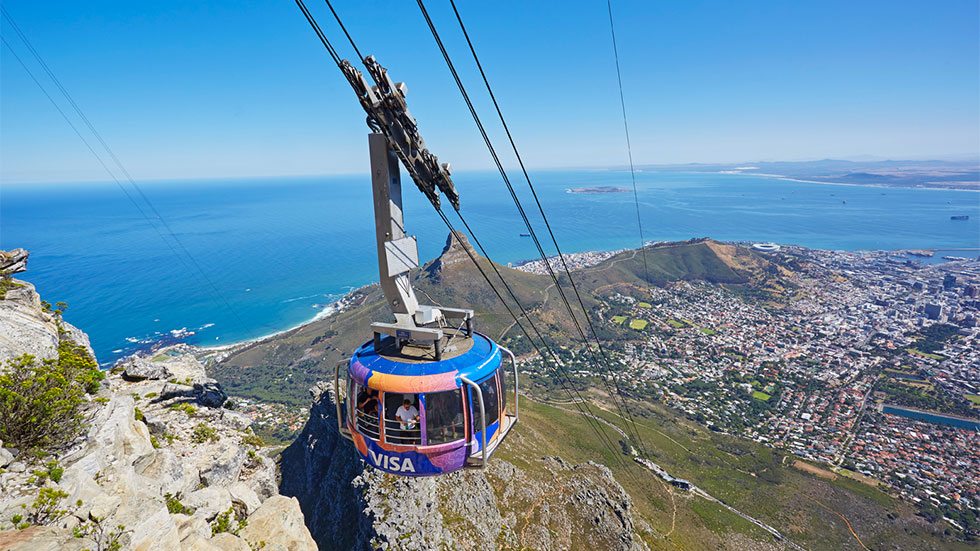 Table Mountain cable car; Photo courtesy of Cape Town Tourism/Bruce Sutherland
Table Mountain cable car; Photo courtesy of Cape Town Tourism/Bruce Sutherland
CAPTIVATED BY CAPE TOWN
Just off the coast of Cape Town lies Robben Island, the former site of the prison where Mandela was held as a political prisoner for 18 of his 27 years of incarceration. Many of the guides are former prisoners or prison guards who provide an insider’s look at the prison that will surely increase your admiration for the strength and fortitude of Mandela.
Cape Town has other, happier attractions that make a visit to this city at one of the southernmost points of the African continent a must. Prime among them is the stunning scenery. The city is hemmed in between the Atlantic Ocean and a line of mountains, the most significant of which is Table Mountain, a 2-mile-long plateau edged by steep cliffs that rock climbers attempt to conquer. For the rest of us, there are cable cars that take visitors to the top.
The day we visited Table Mountain was somewhat cloudy, but as we emerged at the mountaintop, the clouds dissipated to reveal an epic 360-degree view of city, countryside, beaches and bays.
African Travel’s group tours of Cape Town typically include a day trip that takes in the sights of the Cape Point. Our excursion had us riding the Flying Dutchman Funicular up to a lighthouse for yet more views of the wild coastland and visiting the windy Cape of Good Hope, a rocky headland on the Atlantic Coast. Just a short drive away, we stopped at Boulders Beach to see the thriving colony of African penguins that makes its home there, much to the delight of camera-snapping tourists like me.
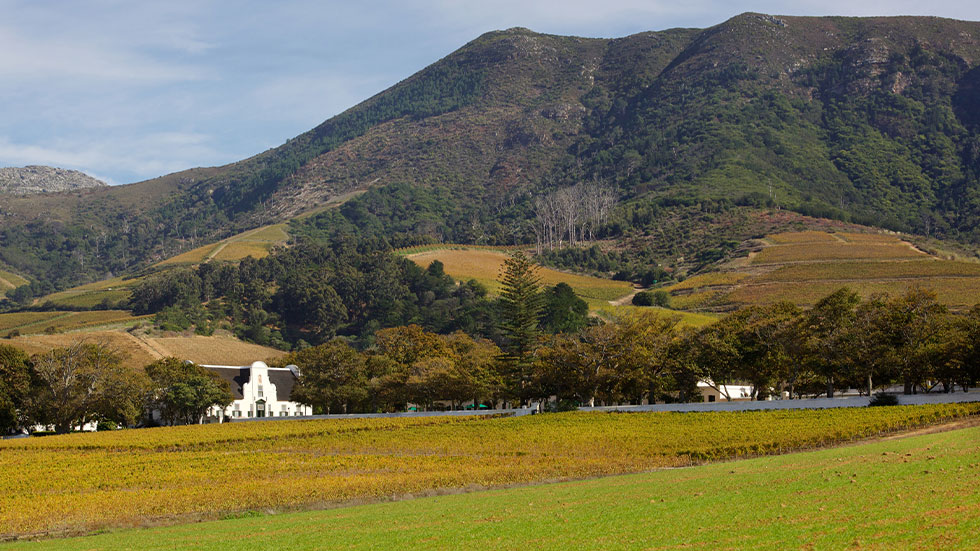 Groot Constantia; Photo by istock.com/ zambezishark
Groot Constantia; Photo by istock.com/ zambezishark
A Mediterranean climate and coastal weather influences make the Cape Town region and the western side of the cape a fertile region for winegrowing, and indeed, viticulture has thrived here since the 17th century, when the oldest of the region’s still-operating wineries, Groot Constantia, was established.
At centuries-old Boschendal, you can sip on merlots, syrahs, pinot noirs and chardonnay while relaxing under towering oak trees or with a view of the food garden. Here, you can also enjoy wine-paired farm-to-table dining that might include the farm’s own Black Angus beef, Duroc pork, fresh produce and baked goods. With some 900 vineyards in the Cape Winelands, you’ll never visit them all, but wherever you wind up, you’ll be treated to world-class wines along with gorgeous scenery.
There are numerous countries to choose from when going on safari in Africa, but my trip to South Africa—with its winning combination of city, coastline, winelands and savanna—was a sojourn that more than fulfilled my childhood fantasies.
